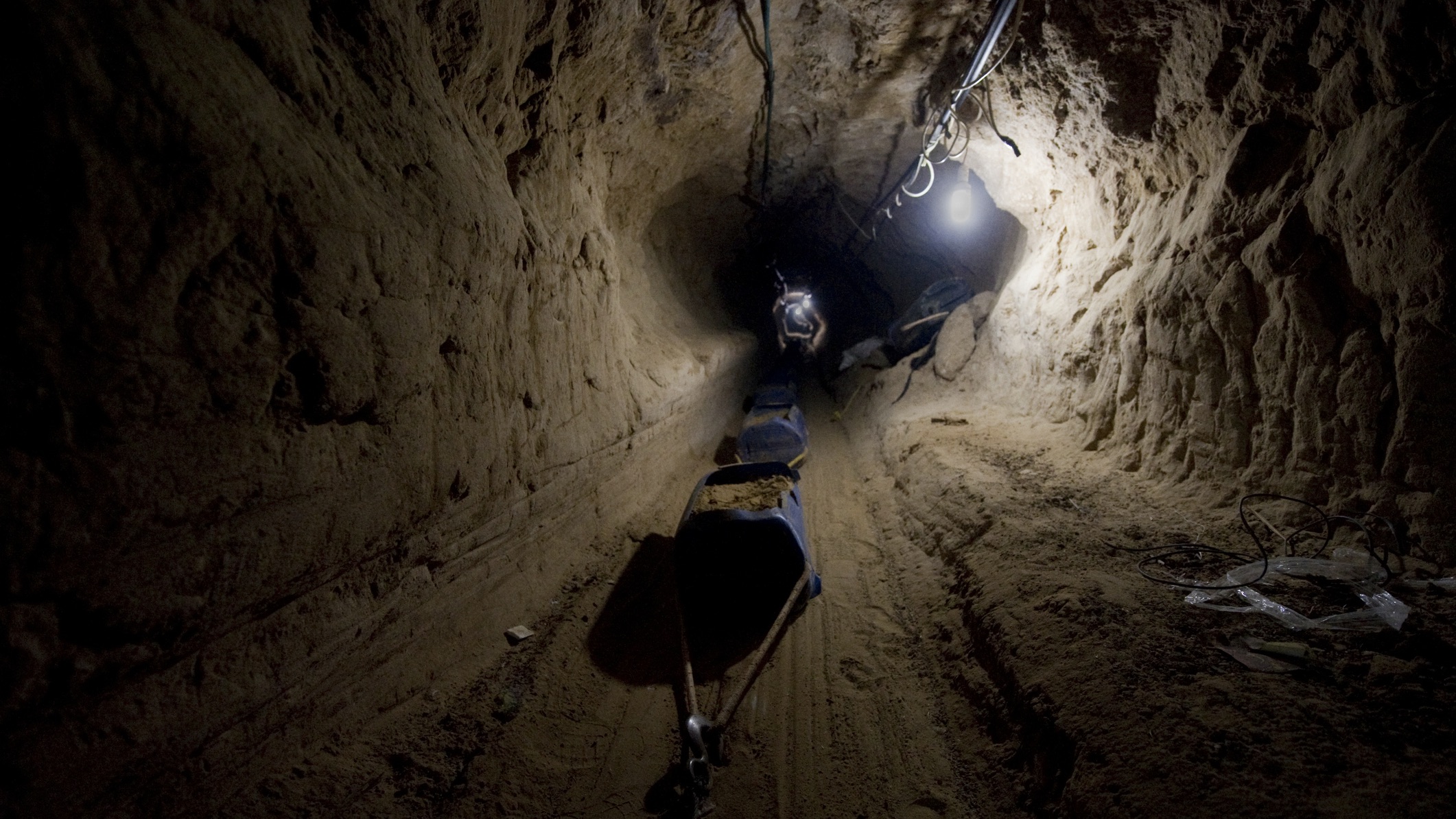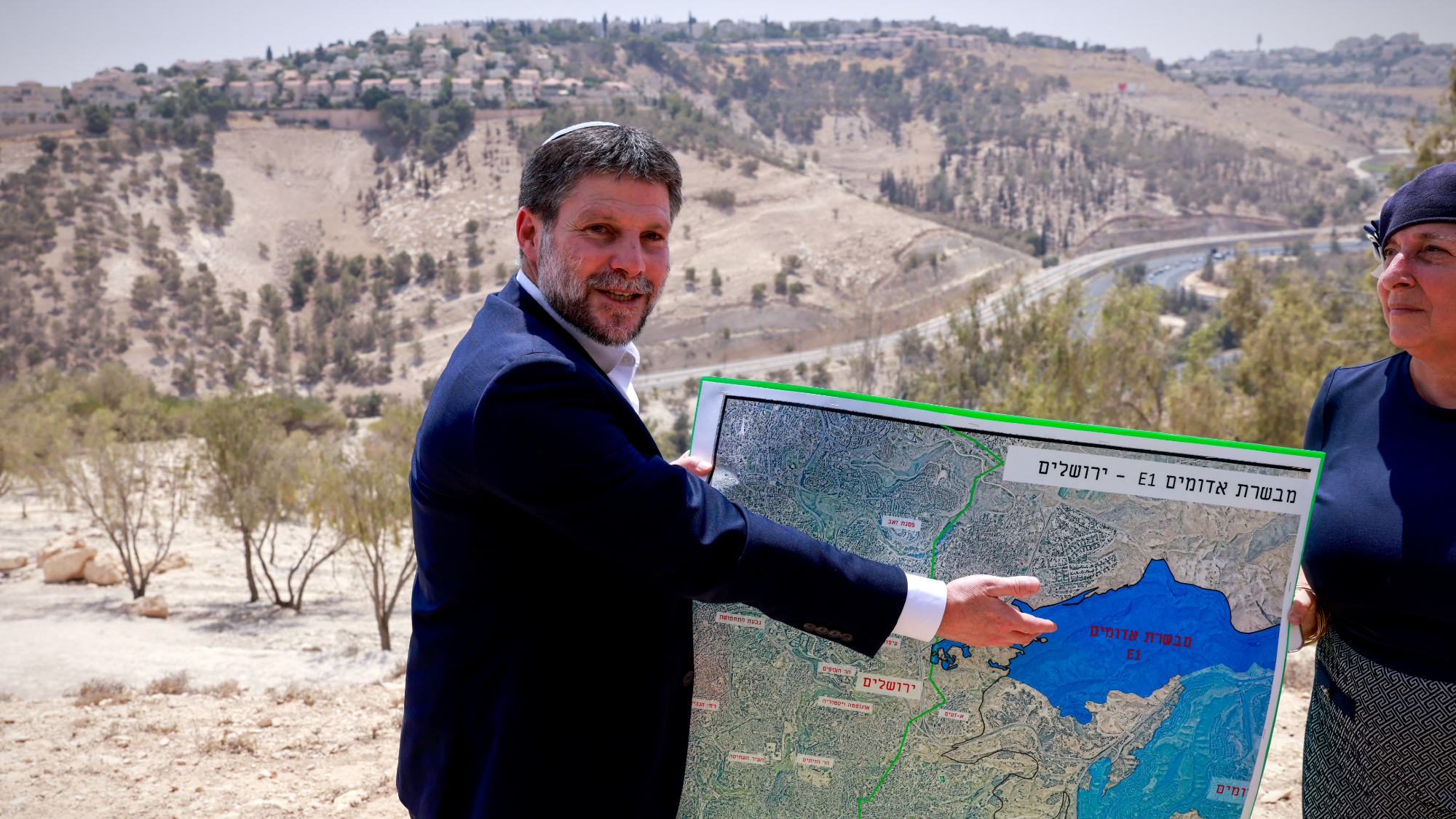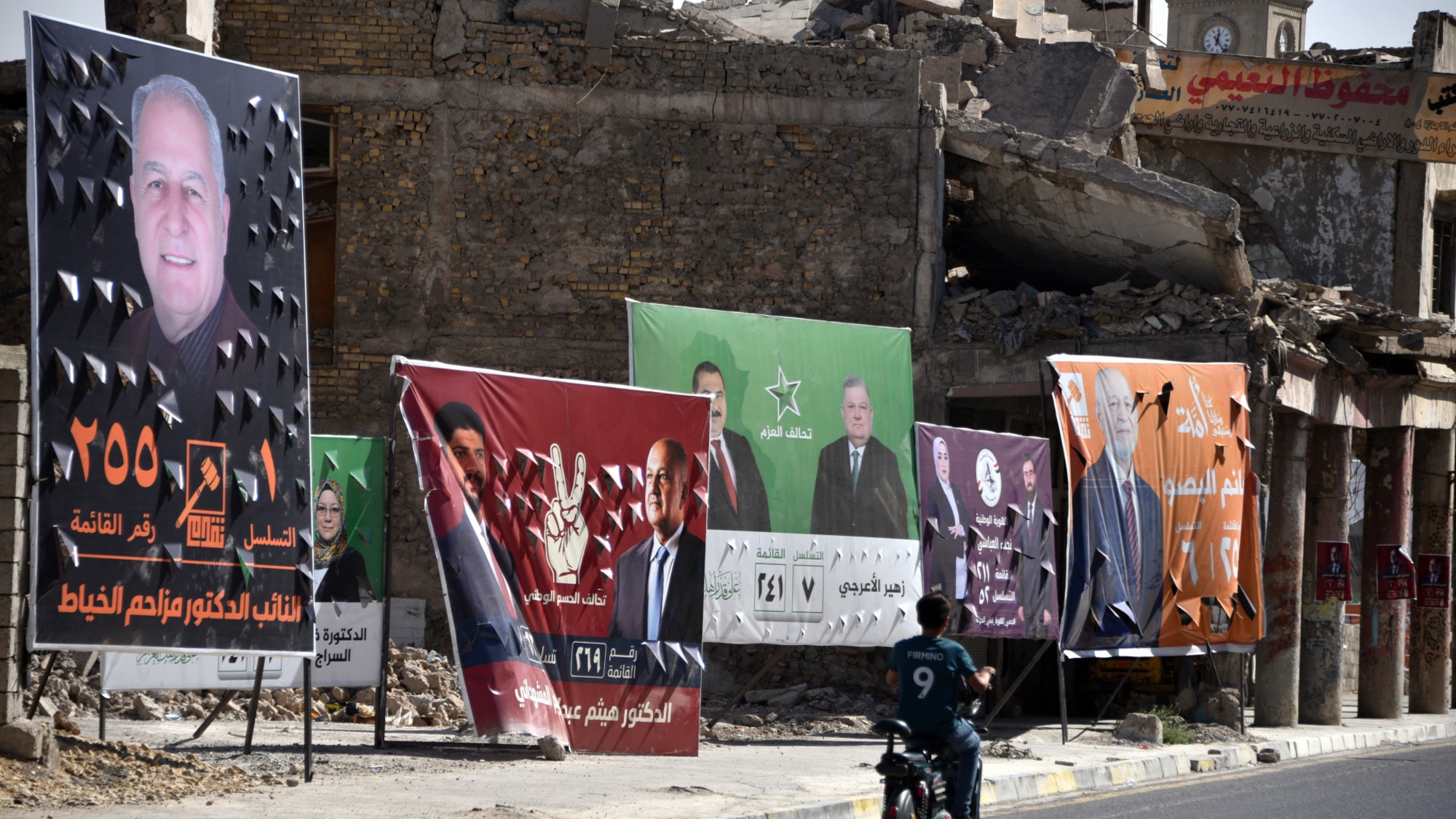Hamas's tunnel warfare: how Israel will contend with the 'Gaza metro'
A complex 300-mile network of passageways lies beneath Gaza

If or when Israel commits to a ground operation in Gaza, the Israeli Defense Forces (IDF) will have to contend with a labyrinthine network of tunnels beneath the territory.
Dubbed the "Gaza metro", the tunnels are essential to Hamas's offensive and defensive operations. Militants use them to move weapons around and evade detection – "compounding the immense difficulties of fighting in a dense urban environment", said Axios reporter Jacob Knutson.
There is a long history of tunnels being used in military encounters. From ancient Judea to the present conflict, and Flanders as well as Vietnam, "underground conflict has a long and brutal history", wrote The Times' associate editor and columnist Ben Macintyre. For Hamas, its network of underground passageways will be "vital", adds Knutson, to resist any ground invasion, which Israeli prime minister Benjamin Netanyahu has said will be a "long and difficult war".
The Week
Escape your echo chamber. Get the facts behind the news, plus analysis from multiple perspectives.

Sign up for The Week's Free Newsletters
From our morning news briefing to a weekly Good News Newsletter, get the best of The Week delivered directly to your inbox.
From our morning news briefing to a weekly Good News Newsletter, get the best of The Week delivered directly to your inbox.
Where are the tunnels in Gaza?
There are two sets of tunnels beneath Gaza, reported CNN, with one used to smuggle goods from Egypt and launch attacks against Israel, and "a second underground network" referred to as the "Gaza metro". They are "underneath houses and inside buildings populated with innocent Gazan civilians", according to the IDF.
There are roughly 1,300 tunnels, wrote Macintyre in The Times, although it's unknown exactly how big the network is, said Axios, with experts saying "they've grown in scale and sophistication over the past two decades". Some tunnels are even fitted with electricity, lighting and rail tracks. They also end at "dozens of hidden access points".
It's a "very intricate, very large – huge – network of tunnels" on a small piece of land, Daphne Richemond-Barak, a professor at Israel's Reichman University, told CNN. This "vast labyrinth" is more than a mile underground, with Hamas claiming in 2021 to have built more than 300 miles of tunnels, which would make it "less than half the length of the New York City subway system" if true.
Why does Hamas use tunnels?
Hamas has been using tunnels since at least the early 1980s, according to Axios, and they were built for families to communicate and for smugglers to shuttle goods. The "use of tunnels by militants" arose in 1987 "during the first Palestinian Intifada".
A free daily email with the biggest news stories of the day – and the best features from TheWeek.com
Hamas conceived its tunnels to "hit back against a better-armed adversary", wrote The Times' Macintyre. The former Hamas leader Khaled Meshaal was reported as saying in 2014 that "we had to be creative in finding innovative ways".
The use of tunnel warfare "has a long and brutal history", Macintyre added, dating back to medieval times, but it took the invention of gunpowder and 20th-century wars "to turn the earth below ground into a battlefield". They "offer militant groups like Hamas an edge in asymmetric warfare", added CNN, "negating some of the technological advancements of a more advanced military like the IDF".
Can Israel eliminate the tunnels?
Israel has built a "sensor-equipped underground anti-tunnel barrier below a fence spanning its entire border with Gaza", said Axios, while it's also "developed new technologies to detect and collapse tunnels" alongside "robotic platforms to map and fight" in them.
"Combat inside tunnels is incredibly difficult," the military expert Edward Luttwak told The Washington Post, and "standard tactics and weaponry are often not suitable inside a subterranean setting". Navigation and communication systems "don't work so far underground", for example, and "the sound emitted by a weapon being fired is also amplified", which means soldiers require "intensified hearing protection".
Military experts describe this "extensive warren of tunnels" as a "soldier’s nightmare", NBC News added, and the "high-tech advantages Israel enjoys above ground disappear when soldiers go underground". They warn against sending IDF forces "inside the stuffy, narrow passages, which are low on oxygen but full of twists and turns".
Experts suspect "Hamas somehow must have breached or turned off" the sensory barrier and that "locating the entrance of a new tunnel is like finding a needle in a haystack", the US broadcaster added. Once a tunnel has been found, "robots that resemble small monster trucks or drones" go in first to map it before human fighters enter. "Any successes, however, may be only temporary" and tunnels can be "resurrected".
Keumars Afifi-Sabet is a freelance writer at The Week Digital, and is the technology editor on Live Science, another Future Publishing brand. He was previously features editor with ITPro, where he commissioned and published in-depth articles around a variety of areas including AI, cloud computing and cybersecurity. As a writer, he specialises in technology and current affairs. In addition to The Week Digital, he contributes to Computeractive and TechRadar, among other publications.
-
 US citizens are carrying passports amid ICE fears
US citizens are carrying passports amid ICE fearsThe Explainer ‘You do what you have to do to avoid problems,’ one person told The Guardian
-
 All roads to Ukraine-Russia peace run through Donetsk
All roads to Ukraine-Russia peace run through DonetskIN THE SPOTLIGHT Volodymyr Zelenskyy is floating a major concession on one of the thorniest issues in the complex negotiations between Ukraine and Russia
-
 Why is Trump killing off clean energy?
Why is Trump killing off clean energy?Today's Big Question The president halts offshore wind farm construction
-
 Israel approves new West Bank settlements
Israel approves new West Bank settlementsSpeed Read The ‘Israeli onslaught has all but vanquished a free Palestinian existence in the West Bank’
-
 How Bulgaria’s government fell amid mass protests
How Bulgaria’s government fell amid mass protestsThe Explainer The country’s prime minister resigned as part of the fallout
-
 Femicide: Italy’s newest crime
Femicide: Italy’s newest crimeThe Explainer Landmark law to criminalise murder of a woman as an ‘act of hatred’ or ‘subjugation’ but critics say Italy is still deeply patriarchal
-
 Brazil’s Bolsonaro behind bars after appeals run out
Brazil’s Bolsonaro behind bars after appeals run outSpeed Read He will serve 27 years in prison
-
 Americans traveling abroad face renewed criticism in the Trump era
Americans traveling abroad face renewed criticism in the Trump eraThe Explainer Some of Trump’s behavior has Americans being questioned
-
 UN Security Council backs Trump’s Gaza peace plan
UN Security Council backs Trump’s Gaza peace planSpeed Read The United Nations voted 13-0 to endorse President Donald Trump’s 20-point plan to withdraw Israeli troops from Gaza
-
 Israel jolted by ‘shocking’ settler violence
Israel jolted by ‘shocking’ settler violenceIN THE SPOTLIGHT A wave of brazen attacks on Palestinian communities in the West Bank has prompted a rare public outcry from Israeli officials
-
 Why these Iraqi elections are so important
Why these Iraqi elections are so importantThe Explainer The US and Israel are increasingly pressuring Baghdad to tackle Iran-backed militants, while weakened Iran sees Iraq as a vital remaining ally